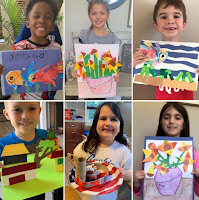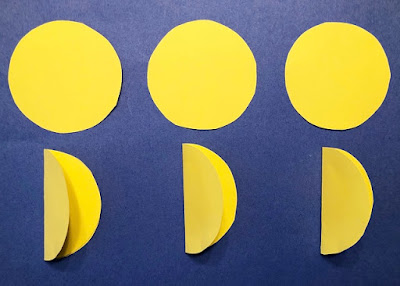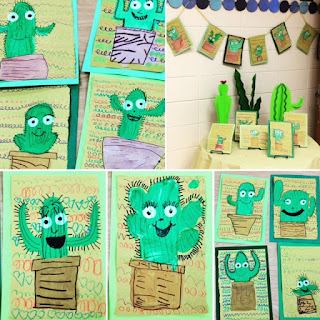Welcome to Art Class at B. Bernice Young School!
Virtual Learning Week 6: Choice Board Week
These online art lessons are provided to you electronically in order to continue art instruction at home while school is closed.
If you have any questions or concerns please email Mr. Giannetto.
Please also follow me on Facebook: Young School Art with Mr. Giannetto
and Instagram @youngschoolartwithmr.g for additional art activities.
Congratulations Young School Artists!
I'm so proud of all my students who have been creating fantastic artwork at home! Here's a shoutout to Young School's Distance E-Learning Star Students of the week!
(All photos are posted with parental permission. Additional artists will be highlighted each week.To have your child participate please include permission to post in your email).
Kindergarten, 1st Grade, and 2nd Grade: Choice Board
This week I’m changing things up and introducing a Choice Board! I understand that art supplies at home may be running low, so many of this week's projects use household items and incorporate play into art making.
Pick one art activity from the Choice Board below to complete for art class this week. Check the art supplies you have available and pick a project to make! Some of the projects are student favorites and others are brand new activities.
Each art activity on the board has a number. Scroll down to find the corresponding set of directions. Each activity has modifications provided for you to adjust the activity depending on your child's grade and ability level. Have fun! Feel free to adapt each lesson with materials that you have available at home. Each lesson is open ended and promotes student choice. Many are STEAM Learning activities and Creative Play activities.
STEAM
STEAM
STEAM (Science, Technology, Engineering, Art, and Math) exploration boosts the development of critical thinking skills, problem solving skills, hands-on learning, and creative thinking.
Creative Play
Playing is learning! Creative play is relaxed, flexible, and encourages freedom through trial and error. Let self-expression and your imagination take over.
When your artwork is complete please email me a photo of your work and include your name and classroom teacher's name in the email.
Option #1: Nature Portraits
This challenge is inspired by the Instagram account @facethefoliage.
Challenge: Create a face using things found in nature such as leaves, sticks, flowers, rocks, grass, and more.
Step 1: Collect an array of items from nature.
Step 2: Identify parts of the face and sort the items into categories such as eyes, noses, mouths, hair, ears, and such.
Step 3: Create a portrait using the objects. Move the items around to see what works best!
Modifications: 1. Create a self-portrait nature face by looking in a mirror as you're working.
2. Make your nature face symmetrical (same on both sides).
3. Sketch a drawing of your finished work.
2. Make your nature face symmetrical (same on both sides).
3. Sketch a drawing of your finished work.
Option #2: Build a City
Challenge: Build a city using materials you can find in your home. One building needs to be able to hold the weight of a small toy figure or toy car. Use what you have around the house such as blocks, books, paper cups, styrofoam, toothpicks, k cups, index cards, cardboard, coasters, and more. Use small toy figures or toy cars to complete the challenge.
Step 1: Gather your building supplies and small toys. Find a flat surface to build on such as a kitchen floor, table, or big books.
Step 2: Begin to build by placing 4 foundation pieces at the bottom and put a piece of paper, cardboard or other flat material on top to create the floor. Experiment with other building techniques as you go.
Step 3: Keep stacking higher and higher! Oh no! My building fell! That’s okay! Try again!
Step 4: Add small toy figures to your building. Yikes! The building collapsed! That’s okay! Learn as you go! Is there a stronger material you can use to support the toy?
Step 5: Play with your city.
Step 6: Put back all of the building supplies where they belong.
Modifications: 1. Add multiple or heavier toy figures or cars to your buildings.
2. Sketch a drawing of your city.
3. Create a city inspired by NYC, Philadelphia, Paris, or London.
Step 6: Put back all of the building supplies where they belong.
Modifications: 1. Add multiple or heavier toy figures or cars to your buildings.
2. Sketch a drawing of your city.
3. Create a city inspired by NYC, Philadelphia, Paris, or London.
Option #3: Found Object Plate Portraits
Challenge: Build a portrait with various objects you can find around the house!
Step 2: Identify parts of the face and sort the items into categories such as eyes, noses, mouths, hair, ears, and such.
Step 3: Create a portrait using the objects. Move the items around to see what works best!
Step 4: Return all items where they belong.
Modifications: 1. Create a self-portrait plate face by looking in a mirror as you're working.
2. Make your face symmetrical (same on both sides).
3. Sketch a drawing of your finished work.
Option #4: Disguise a Stuffed Animal
Challenge: Create a disguise for a stuffed animal. Use construction paper, scissors, and tape to turn your stuffed animal into a different animal.
Step 1: Choose a stuffed animal from your collection and decide how you can disguise it. Maybe turn your teddy bear into a bird or your doll into a rabbit.
Step 2: Begin to cut out various items and tape them onto your stuffed animal.
Step 3: Quiz your family and see if they can guess who is in disguise.
Modifications: 1. Use clothes from another toy and repurpose them.
2. Sketch a drawing of your finished work.
3. Compare and contrast your toy before and after its transformation.
Option #5: Found Object Butterflies
Please click this link to go to the lesson I wrote for Fantastic Fun and Learning.
https://www.fantasticfunandlearning.com/found-object-butterfly-craft.html
Option #6: Build a Boat
Challenge: Build a boat for a small toy figure using paper plates, tape, scissors, and a large bowl, sink, or tub of water. Additional building materials include cereal boxes, paper tubes, tinfoil, paper cups, straws, bubble wrap, construction paper, a water bottle, etc. The goal is to keep the toy safe and dry! You also need to keep the boat afloat. Weight, balance, and the design/construction of your boat are all important factors to keep in mind.
Step 1: Pick a small toy figure from your collection and identify the type of boat that you would like to make. Recall different types of boats such as sailboat, cruise ship, rowboat, canoe, speed boat, etc.
Step 2: Identify parts of the boat that you will need to make, including the sails of the boat, the bottom of the boat, and railings to keep your toy safe.
Step 3: Begin to build your boat. Make sure to create all the parts of the boat you named earlier. Each boat will be one of a kind! Have fun and try different ideas!
Step 4: Put your boat into the water and add the toy inside.
Oh no! My toy figure fell into the water! Yikes! My boat is sinking! That’s okay! We can learn from our mistakes and try again.
Modifications: 1. Write a story about your boat. Where is it going?
2. Sketch a drawing of your boat.
3. Add multiple toys or heavier toys to your boat.
Modifications: 1. Write a story about your boat. Where is it going?
2. Sketch a drawing of your boat.
3. Add multiple toys or heavier toys to your boat.
Option #7: Muffin Tin Marble Maze
Please click this link to go to the lesson I wrote for Fantastic Fun and Learning.
Option #8: Build a Chair
Challenge: Build a chair for a stuffed animal using paper, scissors, tape, cardboard, a cereal box, paper plates, paper tubes, or straws.
Step 1: Review different types of chairs such as a desk chair, folding chair, rocking chair, recliner, stool, lawn chair, wheel chair, high chair, throne, and sofa. Do you have any of those types of chairs in your house?
Step 2: Identify different parts of a chair such as the back, arms, legs, and seat.
Step 3: Begin to build your chair. Make sure to create the seat, arms, and back of your chair. Remember each chair will be one of a kind!
Step 4: Check if the chair can support the weight of your stuffed animal. Is it okay if the chair collapses under the weight of the stuffed animal? Yes! We can learn from our mistakes and try again!
Modifications: 1. Sketch a drawing of your finished work.
2. Use a larger or heavier stuffed animal to test your chair.
3. Use a small toy figure to test your chair.
The Burlington Township School District is committed to making our website accessible for students, staff, and the community. You may request information in an alternate format. Please contact the community relations office to make requests.































































